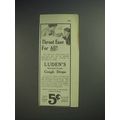Raphael - Portrait of d'Agnolo Doni - Florence - Italian art postcard
- Condition : Used
- Dispatch : 2 Days
- Brand : None
- ID# : 74636117
- Quantity : 1 item
- Views : 336
- Location : United Kingdom

- Seller : justthebook (+1703)
- Barcode : None
- Start : Thu 06 Sep 2012 19:10:34 (EDT)
- Close : Run Until Sold
- Remain : Run Until Sold
Checks/Cheques
 for 1 item(s) edit
for 1 item(s) edit
Shipping Calculator
More Listings from This Seller view all
Seller's Description
- Art Postcard
- Work of art title: Portrtait of Agnolo Doni
- Artist (if known): Raphael / Raffaello d'Urbino
- Media or other details: painting
- Publisher / Gallery: Firenze (Florence) - Galleria Palatina in Palazzo Pitti
- Postally used: no
- Stamp & postmark details (if relevant): na
- Size: modern
- Notes & condition details:
NOTES:
Size: 'Modern' is usually around 6in x 4in / 'Old Standard' is usually around 5 1/2in x 3 1/2in. Larger sizes mentioned, but if you need to know the exact size please ask.
All postcards are not totally new and are pre-owned. It's inevitable that older cards may show signs of ageing and use, particularly sent through the post. Any faults other than normal ageing are noted.
Stock No.: A398
------------------------------------------------
Postage & Packing:
UK (incl. IOM, CI & BFPO): 99p
Europe: GBP 1.60
Rest of world (inc. USA etc): GBP 2.75
No additional charges for more than one postcard. You can buy as many postcards from me as you like and you will just pay the fee above once. (If buying postcards with other things such as books, please contact or wait for invoice before paying).
Payment Methods:
UK - PayPal, Cheque (from UK bank) or postal order
Outside UK: PayPal only please (unless otherwise indicated). NO non-UK currency checks or money orders (sorry).
NOTE: All postcards are sent in brand new stiffened envelopes which I have bought for the task. These are specially made to protect postcards and you may be able to re-use them. In addition there are other costs to sending so the above charge is not just for the stamp!
----------------------------------------------
Text from the free encyclopedia WIKIPEDIA may appear below to give a little background information:
*************
Raffaello Sanzio da Urbino[2] (April 6 or March 28, 1483 � April 6, 1520[3]), better known simply as Raphael, was an Italian painter and architect of the High Renaissance. His work is admired for its clarity of form and ease of composition and for its visual achievement of the Neoplatonic ideal of human grandeur. Together with Michelangelo and Leonardo da Vinci, he forms the traditional trinity of great masters of that period.[4]
Raphael was enormously productive, running an unusually large workshop, and despite his death at 37, a large body of his work remains. Many of his works are found in the Apostolic Palace of The Vatican, where the frescoed Raphael Rooms were the central, and the largest, work of his career. The best known work is The School of Athens in the Vatican Stanza della Segnatura. After his early years in Rome much of his work was self-designed, but for the most part executed by the workshop from his drawings, with considerable loss of quality. He was extremely influential in his lifetime, though outside Rome his work was mostly known from his collaborative printmaking. After his death, the influence of his great rival Michelangelo was more widespread until the 18th and 19th centuries, when Raphael's more serene and harmonious qualities were again regarded as the highest models. His career falls naturally into three phases and three styles, first described by Giorgio Vasari: his early years in Umbria, then a period of about four years (from 1504�1508) absorbing the artistic traditions of Florence, followed by his last hectic and triumphant twelve years in Rome, working for two Popes and their close associates.[5]
Raphael was born in the small but artistically significant Central Italian city of Urbino in the Marche region,[6] where his father Giovanni Santi was court painter to the Duke. The reputation of the court had been established by Federico III da Montefeltro, a highly successful condottiere who had been created Duke of Urbino by the Pope�Urbino formed part of the Papal States�and who died the year before Raphael was born. The emphasis of Federico's court was rather more literary than artistic, but Giovanni Santi was a poet of sorts as well as a painter, and had written a rhymed chronicle of the life of Federico, and both wrote the texts and produced the decor for masque-like court entertainments. His poem to Federico shows him as keen to show awareness of the most advanced North Italian painters, and Early Netherlandish artists as well. In the very small court of Urbino he was probably more integrated into the central circle of the ruling family than most court painters.[7]
Federico was succeeded by his son Guidobaldo da Montefeltro, who married Elisabetta Gonzaga, daughter of the ruler of Mantua, the most brilliant of the smaller Italian courts for both music and the visual arts. Under them, the court continued as a centre for literary culture. Growing up in the circle of this small court gave Raphael the excellent manners and social skills stressed by Vasari.[8] Court life in Urbino at just after this period was to become set as the model of the virtues of the Italian humanist court by Baldassare Castiglione's depiction of it in his classic work The Book of the Courtier, published in 1528. Castiglione moved to Urbino in 1504, when Raphael was no longer based there but frequently visited, and they became good friends. He became close to other regular visitors to the court: Pietro Bibbiena and Pietro Bembo, both later Cardinals, were already becoming well known as writers, and would be in Rome during Raphael's period there. Raphael mixed easily in the highest circles throughout his life, one of the factors that tended to give a misleading impression of effortlessness to his career. He did not receive a full humanistic education however; it is unclear how easily he read Latin
...
Raphael led a ""nomadic"" life, working in various centres in Northern Italy, but spent a good deal of time in Florence, perhaps from about 1504. However, although there is traditional reference to a ""Florentine period"" of about 1504-8, he was possibly never a continuous resident there.[21] He may have needed to visit the city to secure materials in any case. There is a letter of recommendation of Raphael, dated October 1504, from the mother of the next Duke of Urbino to the Gonfaloniere of Florence: ""The bearer of this will be found to be Raphael, painter of Urbino, who, being greatly gifted in his profession has determined to spend some time in Florence to study. And because his father was most worthy and I was very attached to him, and the son is a sensible and well-mannered young man, on both accounts, I bear him great love..."".[22]
As earlier with Perugino and others, Raphael was able to assimilate the influence of Florentine art, whilst keeping his own developing style. Frescos in Perugia of about 1505 show a new monumental quality in the figures which may represent the influence of Fra Bartolomeo, who Vasari says was a friend of Raphael. But the most striking influence in the work of these years is Leonardo da Vinci, who returned to the city from 1500 to 1506. Raphael's figures begin to take more dynamic and complex positions, and though as yet his painted subjects are still mostly tranquil, he made drawn studies of fighting nude men, one of the obsessions of the period in Florence. Another drawing is a portrait of a young woman that uses the three-quarter length pyramidal composition of the just-completed ""Mona Lisa"", but still looks completely Raphaelesque. Another of Leonardo's compositional inventions, the pyramidal Holy Family, was repeated in a series of works that remain among his most famous easel paintings. There is a drawing by Raphael in the Royal Collection of Leonardo's lost Leda and the Swan, from which he adapted the contrapposto pose of his own Saint Catherine of Alexandria.[23] He also perfects his own version of Leonardo's sfumato modelling, to give subtlety to his painting of flesh, and develops the interplay of glances between his groups, which are much less enigmatic than those of Leonardo. But he keeps the soft clear light of Perugino in his paintings.[24]
Leonardo was more than thirty years older than Raphael, but Michelangelo, who was in Rome for this period, was just eight years his senior. Michelangelo already disliked Leonardo, and in Rome came to dislike Raphael even more, attributing conspiracies against him to the younger man.[25] Raphael would have been aware of his works in Florence, but in his most original work of these years, he strikes out in a different direction. His Deposition of Christ draws on classical sarcophagi to spread the figures across the front of the picture space in a complex and not wholly successful arrangement. W�llflin detects the influence of the Madonna in Michelangelo's Doni Tondo in the kneeling figure on the right, but the rest of the composition is far removed from his style, or that of Leonardo. Though highly regarded at the time, and much later forcibly removed from Perugia by the Borghese, it stands rather alone in Raphael's work. His classicism would later take a less literal direction.[26]
type=printed postcards
theme=artists signed
sub-theme=art
number of items=single
period=1945 - present
postage condition=unposted
Listing Information
| Listing Type | Gallery Listing |
| Listing ID# | 74636117 |
| Start Time | Thu 06 Sep 2012 19:10:34 (EDT) |
| Close Time | Run Until Sold |
| Starting Bid | Fixed Price (no bidding) |
| Item Condition | Used |
| Bids | 0 |
| Views | 336 |
| Dispatch Time | 2 Days |
| Quantity | 1 |
| Location | United Kingdom |
| Auto Extend | No |


















